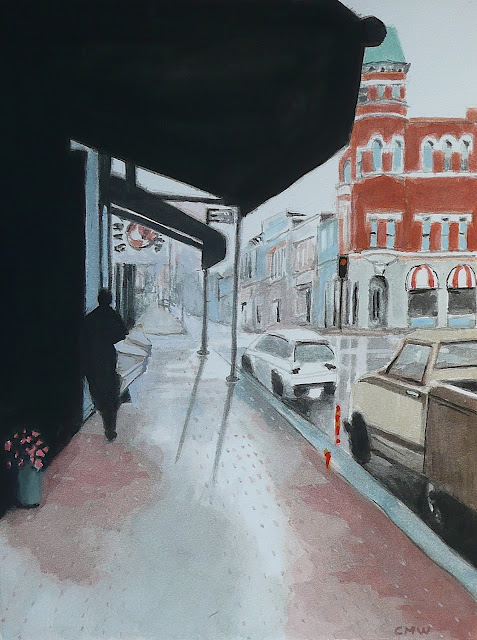 |
| Smokehouse #3 14 x 22 oil pastel on paper |
 |
| Smokehouse #4 14 x 22 oil pastel on paper |
As artists, the pursuit of art, as we think it is or should be:
. . . honest, satisfying, true, unsentimental or sentimental, direct and clear, strong, powerful, well-executed, good or bad or ugly, important, visionary, banal, old school, new school, trite, Kinkadian, amateur, sweet, sour, relevant —words for the weary painter.
It’s very often true that artists hate their work, or at the very least question if it is . . . whatever—fill in your own word.
This week for me has been a mind-numbing exploration of
What is Abstraction, and how do I achieve it?
In the abstract (haha), the answer to both questions is not that difficult, but in application, I’m struggling over issues regarding procedure.
Smokehouse #3 and Smokehouse #4, both oil pastels, are examples of my efforts this week to cross over to abstraction.
My dilemma:
If I start a painting with a given subject as my reference, in this case “smokehouse”, I end up with a clear, non-abstracted, hard-edged image of, yup a smokehouse, regardless of my intention to abstract this subject into a nearly unrecognizable form.
If I start a painting without a given subject as my reference, I can and do happily achieve abstractions, but I am NOT able to express my IDEA of a smokehouse in any satisfying way.
In short, I’m stuck.
I consider both of these paintings okay as paintings, but utter failures on the thorny path to abstraction, although I think #4 has better abstracted elements in it.
Who ever said painting was easy?































.jpg)

.jpg)
.jpg)